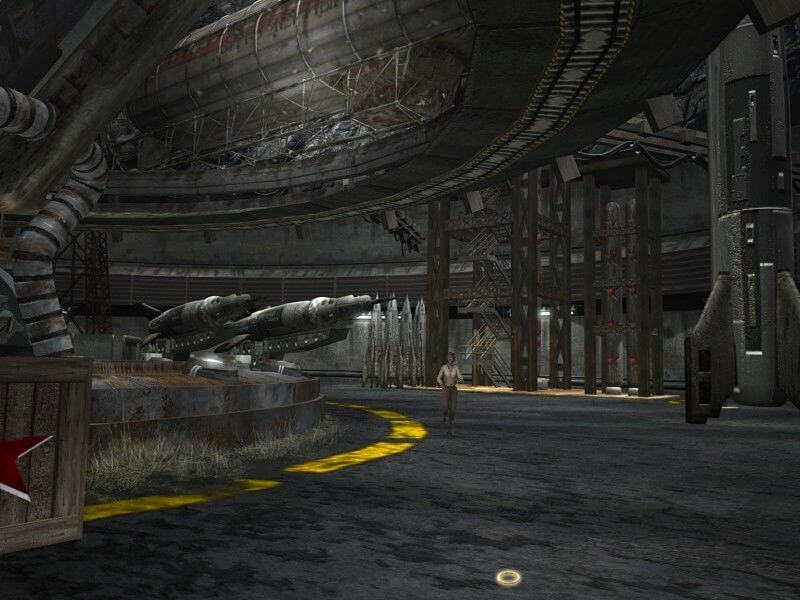

Shortly after completing this challenge, Hans falls ill, forcing Kate to seek treatment for him at a nearby monastery perched on a clifftop. In the Russian town of Romansburg, Kate provides assistance for eccentric inventor Hans Voralberg, who seeks to find living prehistoric mammoths, and his automaton train engineer Oscar, by prepping his specially crafted clockwork train with coal.

The firm instructs the detective to locate and find Walker since her family is worried for her and they start to threathen the firm. The game begins following the events of Syberia with the law firm "Marson and Lormont" that American lawyer Kate Walker worked for in New York, calling in a private detective. The game was received favorably by critics. Syberia II was a commercial success, with sales above 600,000 units worldwide by 2006. Although it is stylistically identical, Syberia II improves by introducing more realistic character animation. The game includes a recap of the first chapter, so it does not require the player to have experienced the first game.
#WHERE DOSE SYBERIA II STORE SETTINGS WINDOWS#
It's a point-and-click adventure game designed by the Belgian comic artist Benoît Sokal, developed and published by MC2-Microïds, and released for Microsoft Windows, PlayStation 2, and Xbox on March 29, 2004, with the game later ported for Windows Mobile, Nintendo DS, Android, OS X, PlayStation 3, Xbox 360, iOS, and Nintendo Switch in later years. Syberia II is the second instalement in the series.
 Video (nvidia): NVIDIA GeForce 8600M GT *. Sound: Sound card with DirectX 9.0c support. Video Card: DirectX compatible graphics card with 128 MB memory. Join Opinion on Facebook and follow updates on /roomfordebate. And as the Chinese learned from the humiliation of 1860, facts on the ground can become lines on the map. Putin's critics fear that this economic integration would reduce Russia, especially Siberia, to a raw materials exporter beholden to Greater China. Perhaps two existing blocs – the Eurasian one encompassing Russia, Belarus and Kazakhstan and the Shanghai Cooperation Organization – could unite China, Russia and most of the 'stans. There is another path: Under Vladimir Putin, Russia is increasingly looking east for its future – building a Eurasian Union even wider than the one inaugurated recently in Astana, the capital of Kazakhstan, a staunch Moscow ally. And if Beijing chose to take Siberia by force, the only way Moscow could stop would be using nuclear weapons. In fact, Beijing could use Russia's own strategy: hand out passports to sympathizers in contested areas, then move in militarily to "protect its citizens." The Kremlin has tried that in Transnistria, Abkhazia, South Ossetia and most recently the Crimea, all formally part of other post-Soviet states, but controlled by Moscow. One day, China might want the globe to match the reality. Increasingly, Chinese-owned factories in Siberia churn out finished goods, as if the region already were a part of the Middle Kingdom's economy. The land is already providing China, “the factory of the world,” with much of its raw materials, especially oil, gas and timber. The vast expanses of Siberia would provide not just room for China's huddled masses, now squeezed into the coastal half of their country by the mountains and deserts of western China. With intermarriage, trade and investment across that border, Siberians have realized that, for better or for worse, Beijing is a lot closer than Moscow. The discrepancy is even starker for Siberia on its own, home to barely 38 million people, and especially the border area, where only 6 million Russians face over 90 million Chinese. The 1.35 billion Chinese people south of the border outnumber Russia's 144 million almost 10 to 1. Hence the former British foothold in Hong Kong, for example.) (Other European powers similarly encroached upon China, but from the south. The border, all 2,738 miles of it, is the legacy of the Convention of Peking of 1860 and other unequal pacts between a strong, expanding Russia and a weakened China after the Second Opium War. And on both sides of the Sino-Russian border, that belief is wavering. But like love, a border is real only if both sides believe in it.
Video (nvidia): NVIDIA GeForce 8600M GT *. Sound: Sound card with DirectX 9.0c support. Video Card: DirectX compatible graphics card with 128 MB memory. Join Opinion on Facebook and follow updates on /roomfordebate. And as the Chinese learned from the humiliation of 1860, facts on the ground can become lines on the map. Putin's critics fear that this economic integration would reduce Russia, especially Siberia, to a raw materials exporter beholden to Greater China. Perhaps two existing blocs – the Eurasian one encompassing Russia, Belarus and Kazakhstan and the Shanghai Cooperation Organization – could unite China, Russia and most of the 'stans. There is another path: Under Vladimir Putin, Russia is increasingly looking east for its future – building a Eurasian Union even wider than the one inaugurated recently in Astana, the capital of Kazakhstan, a staunch Moscow ally. And if Beijing chose to take Siberia by force, the only way Moscow could stop would be using nuclear weapons. In fact, Beijing could use Russia's own strategy: hand out passports to sympathizers in contested areas, then move in militarily to "protect its citizens." The Kremlin has tried that in Transnistria, Abkhazia, South Ossetia and most recently the Crimea, all formally part of other post-Soviet states, but controlled by Moscow. One day, China might want the globe to match the reality. Increasingly, Chinese-owned factories in Siberia churn out finished goods, as if the region already were a part of the Middle Kingdom's economy. The land is already providing China, “the factory of the world,” with much of its raw materials, especially oil, gas and timber. The vast expanses of Siberia would provide not just room for China's huddled masses, now squeezed into the coastal half of their country by the mountains and deserts of western China. With intermarriage, trade and investment across that border, Siberians have realized that, for better or for worse, Beijing is a lot closer than Moscow. The discrepancy is even starker for Siberia on its own, home to barely 38 million people, and especially the border area, where only 6 million Russians face over 90 million Chinese. The 1.35 billion Chinese people south of the border outnumber Russia's 144 million almost 10 to 1. Hence the former British foothold in Hong Kong, for example.) (Other European powers similarly encroached upon China, but from the south. The border, all 2,738 miles of it, is the legacy of the Convention of Peking of 1860 and other unequal pacts between a strong, expanding Russia and a weakened China after the Second Opium War. And on both sides of the Sino-Russian border, that belief is wavering. But like love, a border is real only if both sides believe in it. 
It's hard to imagine such a vast area changing hands. It takes up three-quarters of Russia's land mass, the equivalent of the entire U.S. Siberia – the Asian part of Russia, east of the Ural Mountains – is immense. Like love, a border is real only if both sides believe in it.








 0 kommentar(er)
0 kommentar(er)
